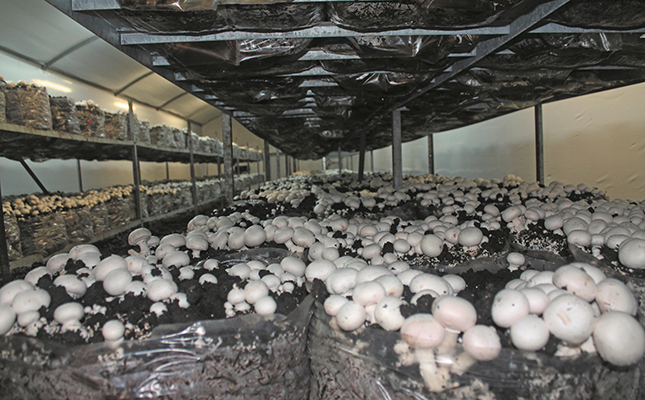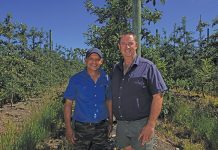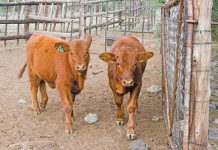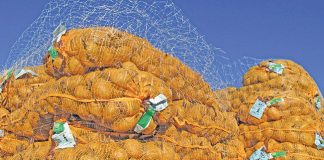
Photo: FW Archive
Mushroom prices in South Africa are still recovering after production of the crop came under pressure during the COVID-19 pandemic, due to the negative impact of trade restrictions on the food service and tourism markets.
In addition, the industry was being constrained by the impact of rising inflation and fuel costs on consumer spending, according to Marietjie Kruger, owner of Chanmar Mushrooms near Heidelberg in Gauteng.
She said a “healthy” market price would be R17 for a 250g punnet, or about R70/kg. These prices were achieved only by high-grade mushrooms, however, with producers supplying major retailers having to settle for prices as low as R15/ punnet and prices attained at the fresh market being closer to R10/punnet.
“Chanmar received an average price of R57,60/kg for white button mushrooms in July, which was slightly lower than the previous month when we made this [amount] for all our catered and packaged products.
“The problem is that mushrooms are often ‘dumped’ on the market in the form of promotions if they don’t sell fast enough, to the detriment of the entire industry,” she said.
Dr Martmari van Greuning, general manager of mushroom producer Sylvan Africa near Centurion in Gauteng, said there had been no major production shifts in the market over the past few years, as the company supplied 95% of the spawn used in South Africa and any trends would have been evident in the company’s sales.
In the past year, she said, a medium-sized farm in Gauteng had been forced to shut down its operation, while another in the Western Cape had been closed temporarily. A number of farms were also struggling with outbreaks of diseases such as dry bubble (Lecanicillium fungicola) and wet bubble (Mycogone perniciosa),
but this was something that farmers had learnt to cope with over the years.
“Production interruptions and the closure of these farms have had a minimal impact on the market as a whole, as most of South Africa’s production comes from three main players, none of which experienced any major glitches.”
Van Greuning added that fluctuations in production did occur, but these were usually temporary and localised, lasted only a couple of weeks, and did not result in a variation of more than 10% in volume.
She identified the spike in production costs and the impact of rolling blackouts on production as the greatest threats to the industry.
“Mushrooms are grown under controlled conditions, so farmers are heavily dependent on generators to maintain climatic conditions during [rolling blackouts], which […] drives up production costs.”











